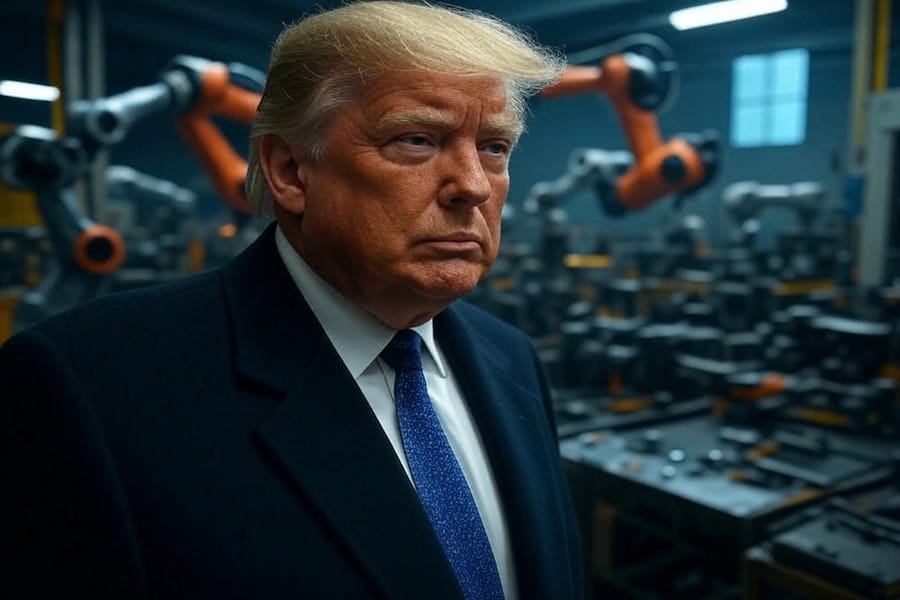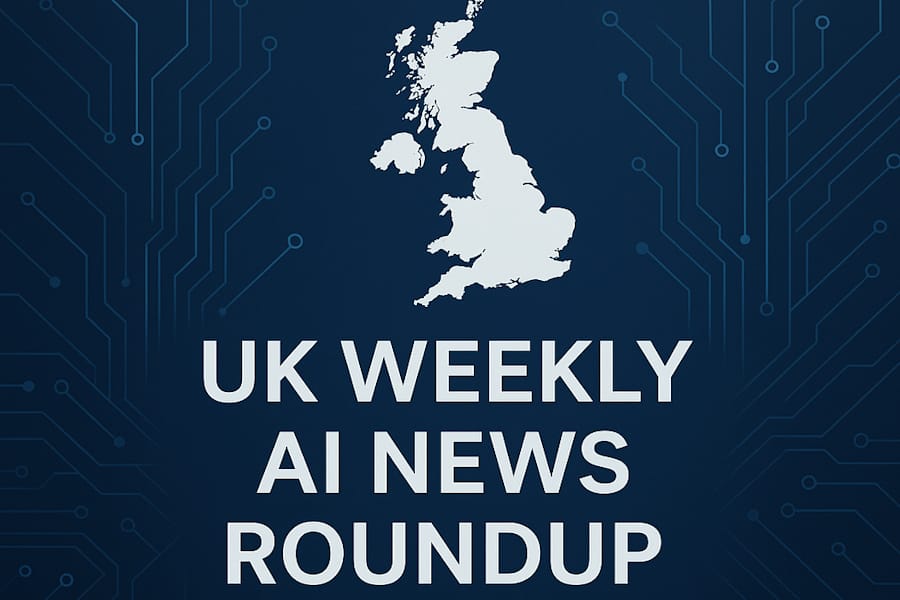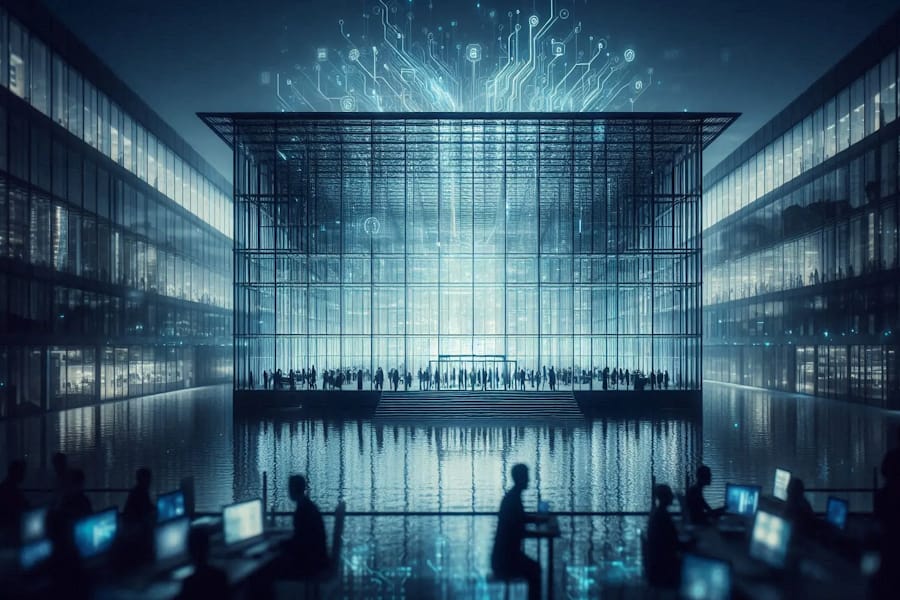The AI Elephant in the Room
Reshaping Trump's Tariff Strategy

Publish Date: Last Updated: 16th May 2025
Author: nick smith- With the help of GROK3
Donald Trump’s commitment to his campaign promises, particularly on trade and tariffs, has been a hallmark of his presidency. Despite media portrayals of unpredictability, his actions reflect a deliberate strategy to reshape global trade dynamics. Within his first 100 days, seismic shifts in U.S. government structure and international trade policy have left opponents scrambling. However, an overlooked factor—artificial intelligence (AI)—is poised to redefine the effectiveness of these tariffs and the future of global industry.
Trump’s Tariff Strategy: A Response to Global Trade Inequities
Trump’s tariffs aim to address long-standing imbalances in global trade. For decades, Western leaders have overlooked practices like state subsidies, lax human rights standards, and environmental violations in countries like China, which have undercut industries in the U.S. and Europe. According to the Economic Policy Institute, the U.S. trade deficit with China alone led to a net loss of 2.4 million jobs between 2001 and 2018, primarily in manufacturing.
While tariffs are designed to incentivize the return of manufacturing to the U.S., they face a complex reality. Global supply chains are not only entrenched but increasingly automated. The rise of AI and robotics is transforming industries faster than tariffs can reshape trade flows, raising questions about whether bringing jobs back is feasible in an era of “dark factories” and automated workplaces.
The AI Revolution: Redefining Industry
Dark Factories and Automation
In China, “dark factories”—fully automated facilities requiring minimal human intervention—are already operational. For example, JD.com’s Shanghai warehouse operates with just four human workers per shift, handling 200,000 orders daily using AI-driven robots. Similarly, Foxconn, a major supplier for Apple, has deployed over 100,000 robots across its factories, reducing human labor by up to 70% in some facilities.
Beyond China, companies like Amazon are leading the charge in the West. Amazon’s fulfillment centers employ over 750,000 robots, which handle tasks from sorting to packaging, cutting operational costs by 25% in automated facilities. Other examples include:
-
Tesla: Its Gigafactory in Shanghai uses AI-driven assembly lines, producing 2,000 vehicles daily with 90% automation.
-
Siemens: Its Amberg plant in Germany achieves 75% automation, producing 15 million components annually with only 1,000 workers.
The Global Impact
AI’s reach extends beyond manufacturing. In logistics, companies like DHL use AI for route optimization, reducing fuel costs by 15%. In retail, Walmart’s AI-driven inventory systems have cut stockouts by 30%. These advancements improve efficiency but displace low-skill jobs, which have historically been vital for entry-level workers and economic stability.
According to the World Economic Forum, AI and automation could displace 85 million jobs globally by 2025 but create 97 million new roles, many requiring advanced skills. This shift underscores the need for education systems to prioritize adaptability, entrepreneurship, and tech literacy.
The Carbon Conundrum: Greenwashing vs. Reality
Trump’s tariffs also intersect with environmental debates. Western nations have claimed green credentials by offshoring carbon-intensive industries to developing countries. For instance, the EU’s carbon emissions dropped by 29% from 1990 to 2020, but this partly reflects the relocation of manufacturing to Asia, where emissions rose by 45% in the same period.
Bringing industry back to the West could reduce this hypocrisy but faces challenges. The British Steel case, where coal is imported from the U.S. and Australia, highlights the complexity of “green” supply chains. Moreover, returning factories will likely be highly automated, requiring fewer workers and generating less economic impact than anticipated. A 2023 McKinsey report estimates that 60% of new manufacturing facilities in the U.S. will be automated by 2030, employing 80% fewer workers than traditional plants.
The Social and Economic Fallout
AI’s disruption extends to healthcare, education, and personal care. In healthcare, AI diagnostics, like Google Health’s breast cancer detection system, outperform human radiologists by 11.5% in accuracy. In education, personalized AI tutors, such as those piloted by Khan Academy, improve student outcomes by 30% compared to traditional methods. While these advancements enhance quality, they reduce demand for human workers in these sectors.
The loss of manual and entry-level jobs—historically a stepping stone for young workers and low-income earners—poses a societal challenge. The U.S. Bureau of Labor Statistics projects that roles like warehouse workers and retail clerks, which employ 10 million Americans, will shrink by 8% by 2030 due to automation. Without robust retraining programs, this could exacerbate inequality and social unrest, as seen in the backlash against DOGE’s fraud crackdowns, where public frustration led to vandalism and violence.
A Path Forward: Education and Adaptation
To mitigate AI’s disruptive effects, governments must overhaul education systems. Initiatives like Singapore’s SkillsFuture, which offers lifelong learning credits, could serve as a model. In the U.S., only 27% of community colleges offer AI-related training, per a 2024 National Science Foundation report. Expanding access to such programs is critical.
Trump’s tariffs, while well-intentioned, must account for this AI-driven reality. Policies should incentivize companies to invest in human-AI collaboration rather than full automation. For example, Germany’s Industry 4.0 initiative subsidizes firms that integrate AI while retraining workers, maintaining employment levels.
Conclusion
Donald Trump’s tariffs are a bold attempt to restore U.S. industrial might, but they collide with the AI revolution reshaping global economies. Dark factories, automated supply chains, and AI-driven services are redefining work faster than trade policies can adapt. To succeed, the U.S. and its allies must pair tariff strategies with investments in education, retraining, and human-centric AI adoption. Only then can the West reclaim industrial leadership without sacrificing its workforce to the machines.
More Great AI News Articles
AI Questions and Answers section for AI Revolution Trump Tariffs
Welcome to a new feature where you can interact with our AI called Jeannie. You can ask her anything relating to this article. If this feature is available, you should see a small genie lamp above this text. Click on the lamp to start a chat or view the following questions that Jeannie has answered relating to AI Revolution Trump Tariffs.
Be the first to ask our Jeannie AI a question about this article
Look for the gold latern at the bottom right of your screen and click on it to enable Jeannie AI Chat.






